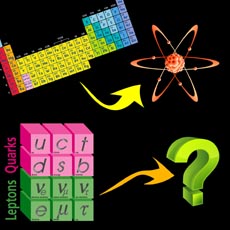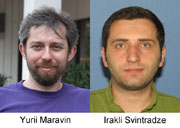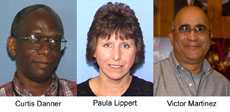Subatomic excitement
 |
| The structure of the periodic table gave the first clues that atoms are composed of even smaller building blocks and even gave hints as to how those components were arranged. Similar structures seen in quarks and leptons might be pointing us to an even deeper level of matter. |
The Standard Model of particle physics is truly a triumph of scientific achievement. By combining 12 fundamental (i.e. structureless) particles and four forces, we can explain essentially every measurement that has investigated the nature and structure of matter. And, for most descriptions of nature, only four particles are needed. All of humanity can rightfully be proud of this accomplishment.
Nevertheless, the Standard Model is an incomplete model. There are unanswered questions and lots of them. While they are all interesting and should be solved, there's usually one that bugs some scientist a bit more than the others. The one that bugs me the most personally is why—if all ordinary matter can be constructed of up and down quarks, electrons and electron neutrinos (the first column of the quarks and leptons in the figure)—why there are two additional columns of seemingly redundant particles. As Nobel laureate I.I. Rabi is reported to have exclaimed when he heard of the muon, the first-discovered of these seemingly redundant particles, "Who ordered that?!"
It is likely that these extra particles are giving us an important hint about the makeup of the universe. In the late 19th century, scientists observed a similar curious phenomenon. The chemical periodic table could be arranged in columns of chemically similar elements, and as one moved from the top of a column to the bottom, the atomic masses increased. While early chemists didn't understand the reasons for these patterns, the structure was pointing to things we now take for granted, including all of nuclear and atomic physics.
It is entirely possible that the patterns observed in the quarks and leptons of the two additional columns are pointing to a similar phenomenon. These particles might not be fundamental at all, but may rather consist of even smaller building blocks. If this is true, then just as we can add energy to atoms by heating them up and so see clear evidence of the existence of electrons from the spectrum of light they emit, it might be possible to add energy to the hypothetical constituents of quarks and leptons and see that energy when it is emitted.
The CMS experiment searched to see if there was any evidence that electrons and muons could absorb and emit light. In analogy to the excited atoms found in a neon light, these hypothetical particles are called excited leptons. No evidence for excited leptons was observed, but this measurement is the most stringent test of this hypothesis to date.
—Don Lincoln
 |
| These physicists from Kansas State University contributed to this analysis. |
 |
| This group of Fermilab technicians, working within the PPD/EED/Infrastructure and Support Group, provides technical support for the CMS hadronic calorimeter and silicon detectors. |
|